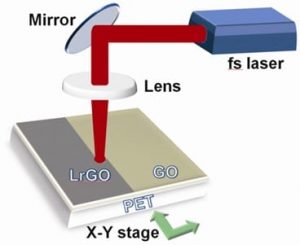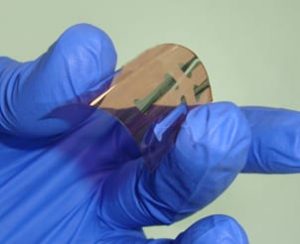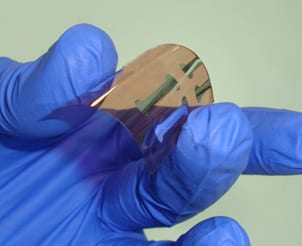 Researchers from Greece have demonstrated a groundbreaking methodology for controlled in-situ reduction of spin-casted graphene oxide (GO) nanometric films on flexible substrates and the subsequent realization of highly conductive and transparent electrodes for flexible organic photovoltaics (OPV). This technique is the first reported to be compatible with temperature-sensitive substrates in the sense that it achieves reduction of films on flexible substrates in a single step, in contrast to the approaches utilized so far.
Researchers from Greece have demonstrated a groundbreaking methodology for controlled in-situ reduction of spin-casted graphene oxide (GO) nanometric films on flexible substrates and the subsequent realization of highly conductive and transparent electrodes for flexible organic photovoltaics (OPV). This technique is the first reported to be compatible with temperature-sensitive substrates in the sense that it achieves reduction of films on flexible substrates in a single step, in contrast to the approaches utilized so far.
Their work also provides clarification that efficient photoreduction of GO can be achieved by exploiting non-thermal processes occurring upon ultrafast laser treatment. This suggests that there is no need for high temperature treatments that potentially destroy the integrity of the graphene lattice as well as the flexibility of the underlying substrate.
 The in-situ non-thermal photoreduction of spin-coated GO films creates a novel way to produce functional graphene electrodes for a variety of applications in a process that carries substantial promise for potential implementation in organic electronics industry. By employing the optical schemes and translation systems that have already been developed for industrial lasers, rapid large area processing can be realized that makes this technique easily adaptable to a roll-to-roll manufacturing line for the mass production of OPVs.
The in-situ non-thermal photoreduction of spin-coated GO films creates a novel way to produce functional graphene electrodes for a variety of applications in a process that carries substantial promise for potential implementation in organic electronics industry. By employing the optical schemes and translation systems that have already been developed for industrial lasers, rapid large area processing can be realized that makes this technique easily adaptable to a roll-to-roll manufacturing line for the mass production of OPVs.

















